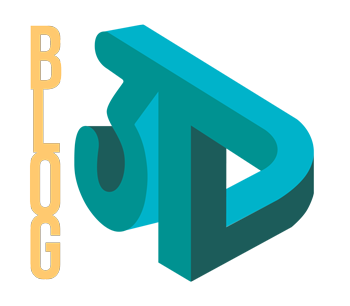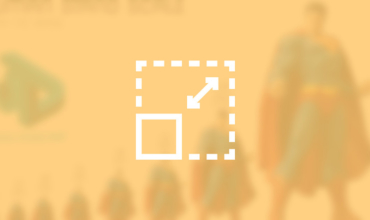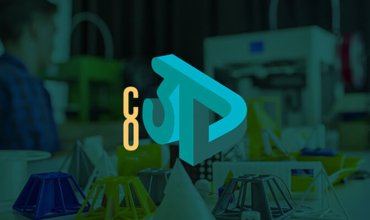How much should I charge for my model?
How much should I charge for my model? What is the value of my work? How can I calculate hours of effort in a modeling? If you are a modeler, at some point in your career you must have already faced one of these questions in your mind!
Know how much to charge for a model is one of the most sought after questions here at CO3D! In fact, it’s not that simple to come up with an answer and we’ve already gone ahead: there is no cake recipe. Each case must be analyzed separately, considering the particularities of the work. It is to help you reach an answer that is more consistent with your reality that we have prepared this post!
To start our reasoning, let’s think in terms of hours. Defining the value of a model requires a fine understanding of the time spent in modeling. The first step in this task is to learn to predict the amount of hours to be spent on a job. But how to get there?
There are two main points that directly influence creation time that need to be considered. See below!
1) File complexity
Some models have lots of accessories, complex bases, extra items and much more. Watch out for it! How complex is the work you need to do? At this point, it is very important to know what level of detail is needed and what level of customer demand.
For example…
When it comes to miniatures, it is necessary to define the scale (click here to understand how the scales work) of the object to be modeled, so that you can identify which details should appear in the print.
Let’s assume you are modeling a human being that will be printed at a 1:100 scale. This means that the printed model would be just over 1 cm tall. In this case, hardly an accessory such as a ring would appear clearly in the print, and working on it would just be a waste of time. Therefore, it is essential to know in advance the chosen scale! Thus, you save your time by knowing exactly which items you should put your effort into.
On the other hand, if you’re making a cosplay helmet (ie, in 1:1 scale), most likely, the smallest details will show up. This requires greater attention and quality in the smallest parts. So, know how to direct your time and effort!
2) Preparing for printing
This is another extremely important point! Preparation for printing should only be done after approval by the customer, otherwise the likelihood of you facing rework is very high. The process to prepare the part for printing must be done with great care and presence, in an attempt to avoid, as much as possible, problems during printing. This step must be done in conjunction with the print test, which can be performed by the modeler himself or by another professional in the area.
With these two points in mind, let’s get to precision! To achieve accuracy in the time spent on each step of your work, let’s use a practical example.
A practical example
Thinking about the items mentioned above, let’s take an imaginary modeler to simulate the production of a budget. Suppose our modeler’s name is Alex.
Alex entered the CO3D website and found a modeling request for the character:
Now he needs to send a quote and first he will take into account the complexity of the file, from the points below:
- Scale: The customer requested a 1:6 scale model, which is quite common. This means that, for a standing human without a base, when printed, the model will be around 30 cm in size.
- Level of Detail: Imagining the potential of today’s printers, we know that most elements of the image will appear in print as they can print up to 0.01mm.
Then, to make it easier, Alex separates the elements to be modeled and makes a rough forecast according to his own pace of work. Thus, he will manage to be more faithful to the modeling time.
| ELEMENT | TEMPO APROXIMADO DE DURAÇÃO DA MODELAGEM |
| Body structure (basemesh with generic face) | 1h |
| Boots | 2h |
| gloves and sashes | 2h |
| Right arm armor | 2h |
| Swords | 3h |
| Skirt | 3h |
| Belt | 1h |
| Beard | 2h |
| Hair | 2h |
| Shoulder pad | 1h |
| Scarf | 3h |
| Pose and adjustments | 3h |
| Base | 3h |
| TOTAL TIME: 28h |
ATTENTION: These numbers are NOT real and are only to illustrate how to divide the process so that you have a broader and better view of the whole. The pointed parts can have different modeling times according to the modeler’s skills.
Some are easier with organic parts, others with a hard surface, for example. Therefore, it is essential that you know your own rhythm!
TIP! Count the start and end time of each of your jobs. Over time, you will begin to predict your pace more accurately.
Attention to the base!
The creation of the base is the artist’s responsibility and the modeling time can also vary a lot! If there is no information about this in the reference image or in the description of the project made by the client, be creative to do as you see fit: in a simpler or more complex way. You can use elements from the image or research more about the object to be modeled to get cool ideas.
In the case of our example, our modeler, Alex, took about 3 hours to finish his base. This means that he chose to make a base with some details, but nothing too exaggerated.
To proceed with the budget, Alex needs to calculate the ready-to-print time. Our experience in the 3D printing area has shown us that the time spent preparing the file for printing is around 20% of the time spent on modelling. So, in our example, Alex would add another 4 hours of work to this step.
And what should the modeler do at this point? At CO3D, we have prepared a checklist for just that. Below are the prerequisites for a .stl file to be printed:
Checklist
- It must be divided into parts with fittings, unless it is previously combined or when it does not require supports.
- Caution 1: The parts must really fit together. Whenever making a plug, make sure it is slightly smaller than the hole.
- Caution 2: Some parts, even with the plug reduced, do not fit due to contact with other parts of the model.
- Each piece must have only one object, being solid and without internal parts.
- The model must have the escala correct presented, according to the combined.
- Each separate part must have the correct measurements so that, at the end, the assembly will be in the scale combined.
- The thinnest parts of the model must have a minimum width of 0.6 mm.
- When making the model, be as faithful as possible to the conceptual art and the observations pointed out.
- Optional: Position the model so that it generates less support.
Finally, only the print test remains. If you do the test print yourself, you can add a few hours of work here. In Alex’s case, he will use professionals and offer his model as a gift for them to test for him.
At the end of it all, we are left with the following scenario:
| MODELING | PREPARATION FOR PRINTING | TOTAL |
| 28h | 4h | 32h |
Now just put the value of your hour and that’s it…
But how much is my hour worth?
This is easy. First, we return the question to you: How much do you want to earn, on average, in the month?
Let’s imagine that Alex answered: R$5000. If you work 8 hours a day and 20 days a month, we have a total of 190 hours a month. Therefore:
5000 / 190 = 26
The value of your hour, in this case, would be R$26.
ATTENTION: These numbers are NOT real and are for example only. Every modeler needs to change these numbers according to the way they work.
An important detail is that working hours are only a forecast. You can work more or less than planned, according to demand. This can leave your monthly amount variable.
Remembering that the amount you want to earn in the month represents the gross amount. Therefore, you need to remember to include other expenses, such as your 13th, vacation, pension, necessary materials and everything else so that you can do your job with quality.
In addition, you can choose to work less time and increase your hourly value based on the experience you gain over time.
experience is an important point to define the value of your hour! If you were in doubt when answering how much you want to earn in the month, it is important to remember that this value is defined by your experience.
Going back to Alex’s budget, he calculated that he would spend 32 hours on the model in question. Multiplying this number by the hourly value he set for you, R$26, we have a total of R$832.
Model Sale
Now, to facilitate the sale, Alex is going to make a collective purchase, so that several people can purchase his model at an affordable price. In this way, he will be able to reach the amount he planned. We’ll soon make a post showing you how to choose the correct amount of quotas and the amount to increase your campaign’s chance of success.
Other tips
To finish our post, here are other points you can take into account when sending a quote:
- Is there already a similar object/statue for sale? Make sure you are competitive with value.
- Remember that you are selling a digital file, meaning you can sell it multiple times without having to do anything new (except when the model has an exclusivity contract).
- In the case of exclusive work, that is, done exclusively for a client for a combined period, remember to add the amount of sales that could be made if it weren’t exclusive.
- Timeliness and urgency of a project can interfere with the value, as you need to get what you’re doing and move ahead, and speed up the process.
A big hug, see you later!



